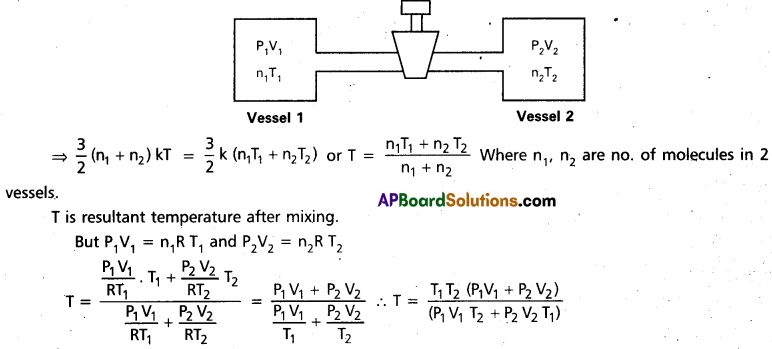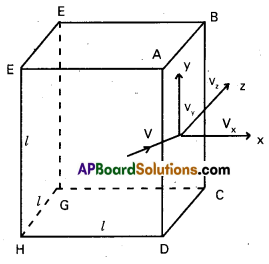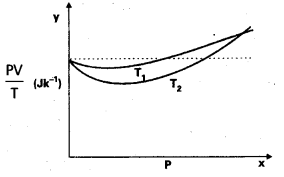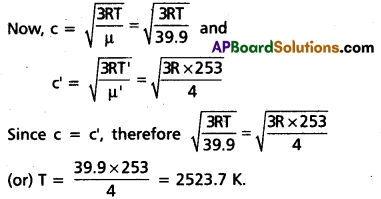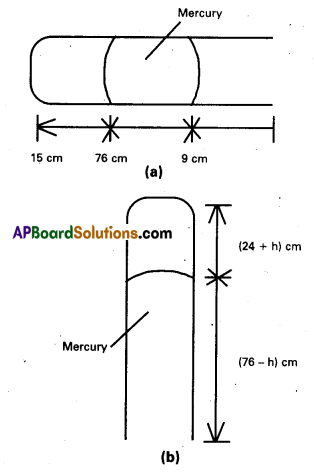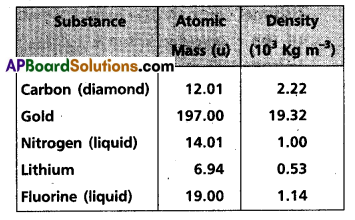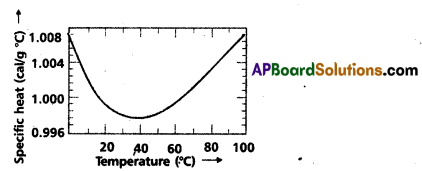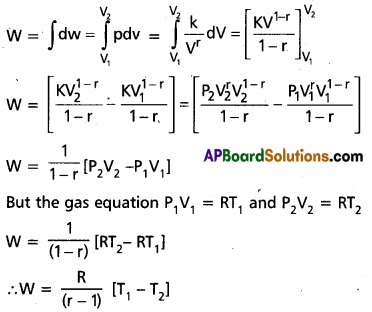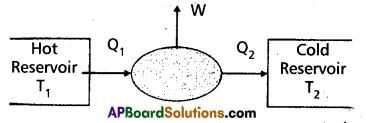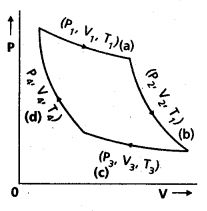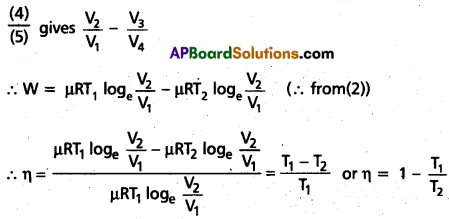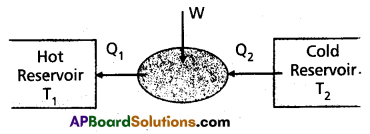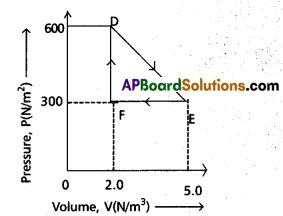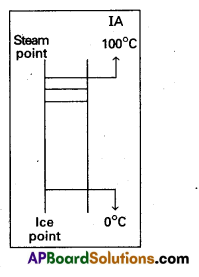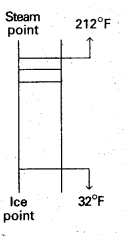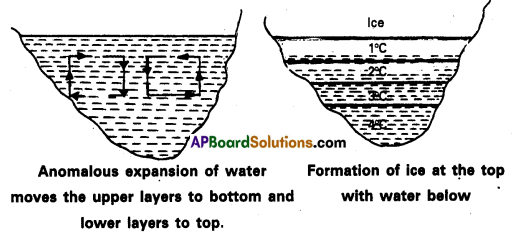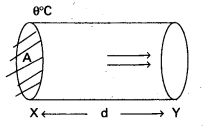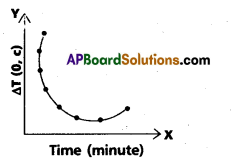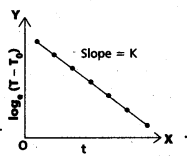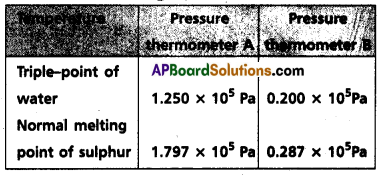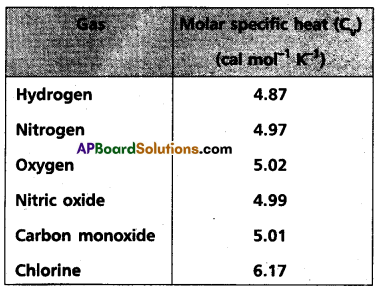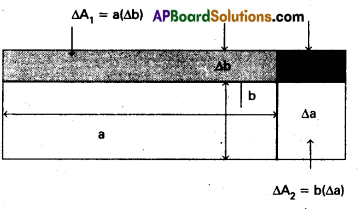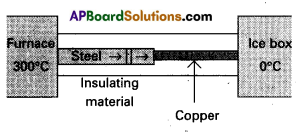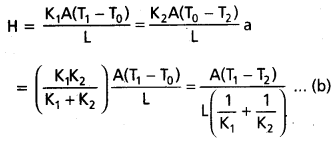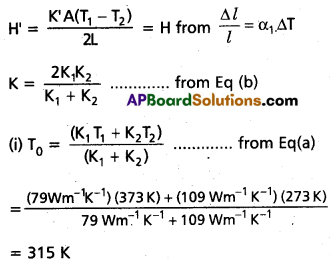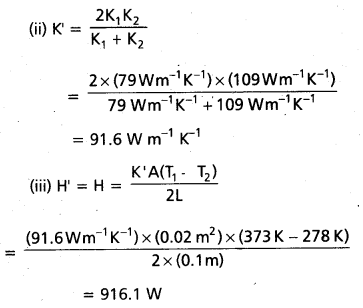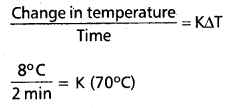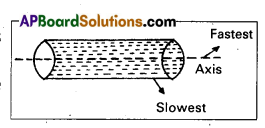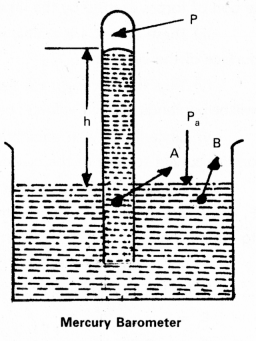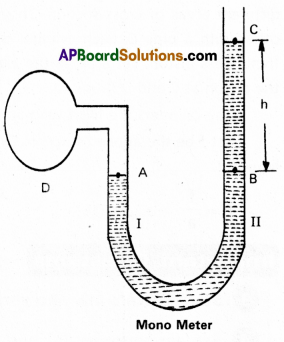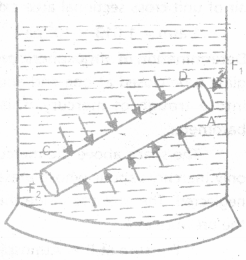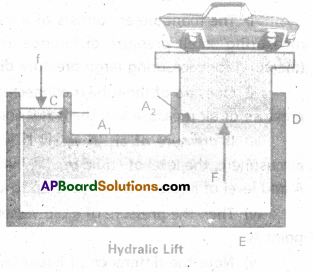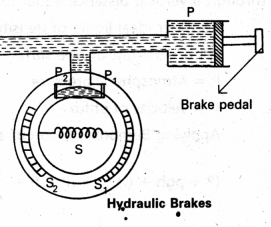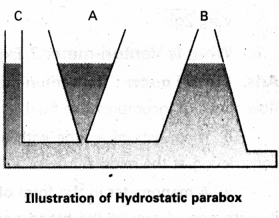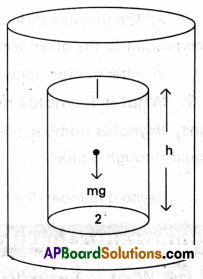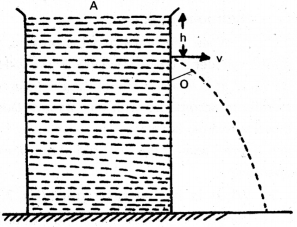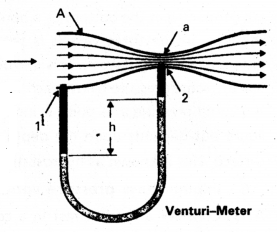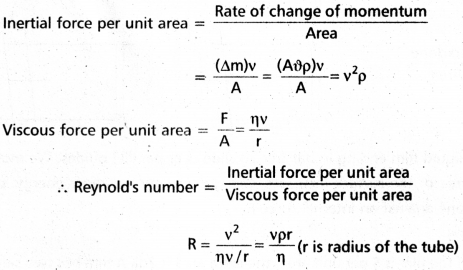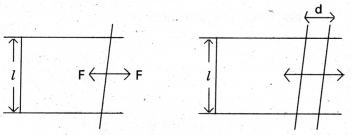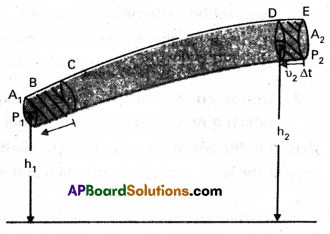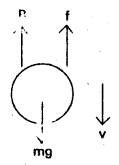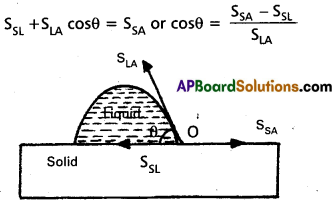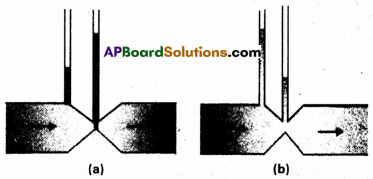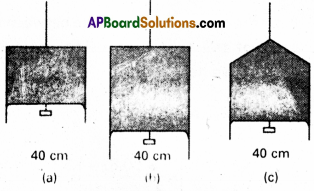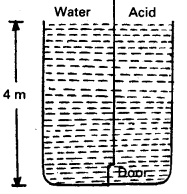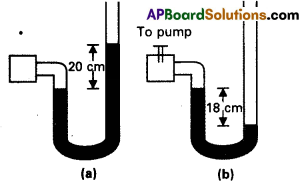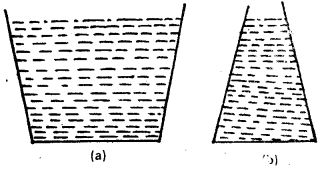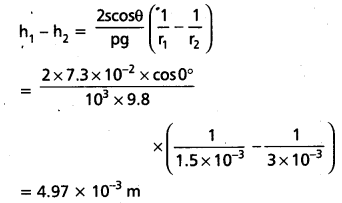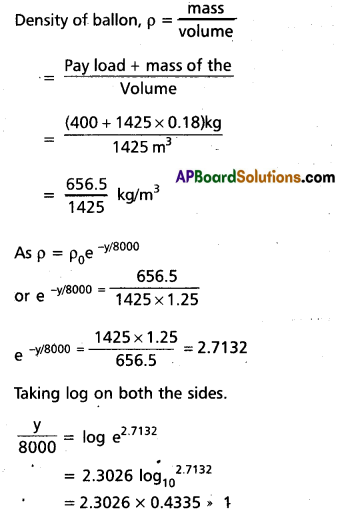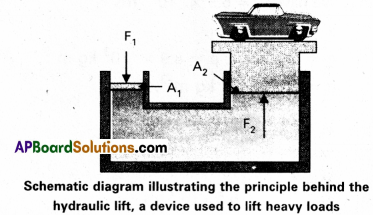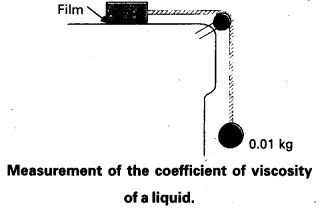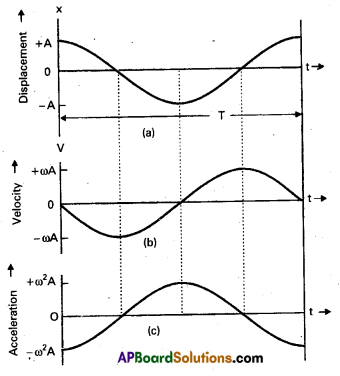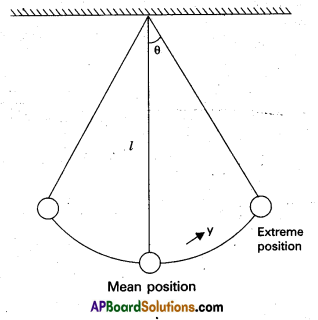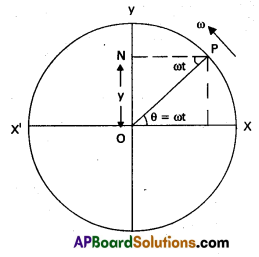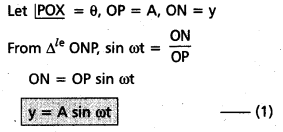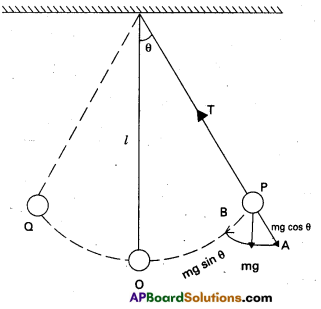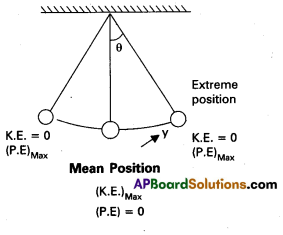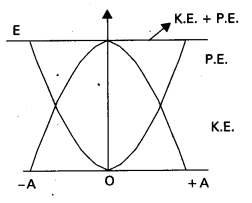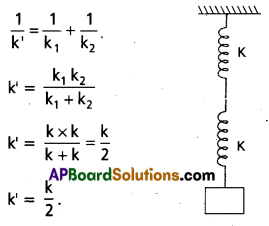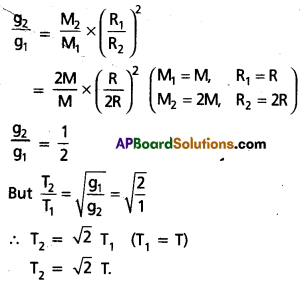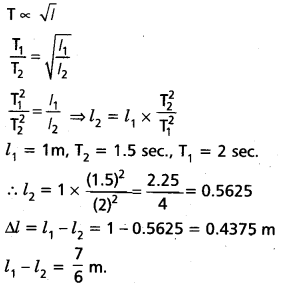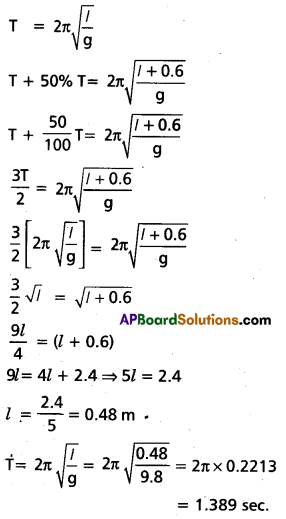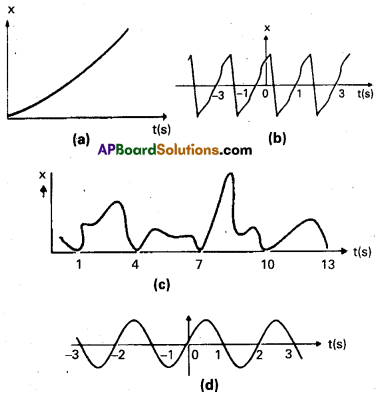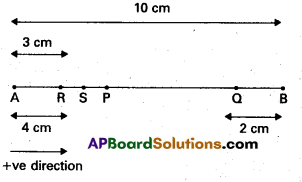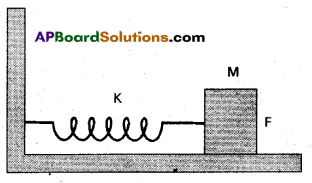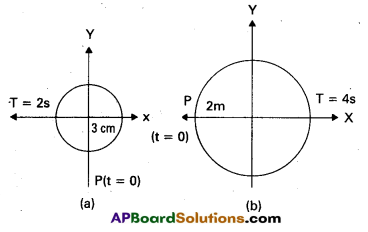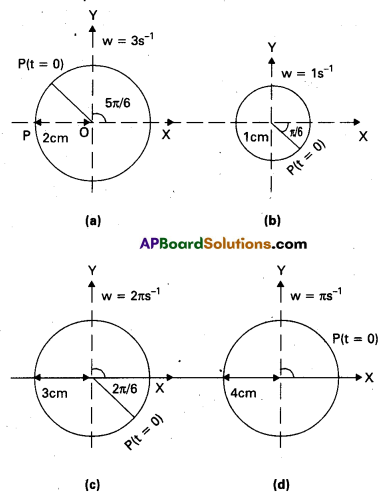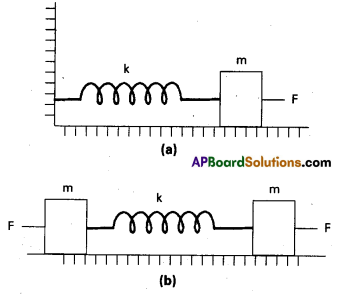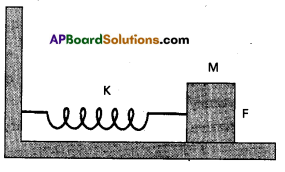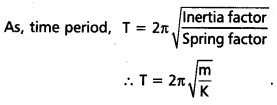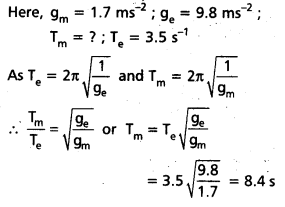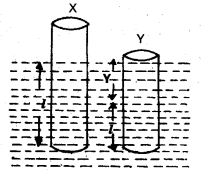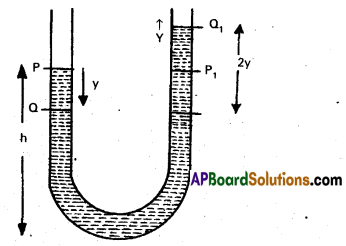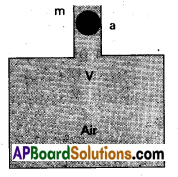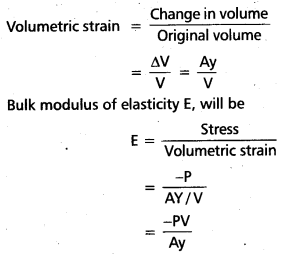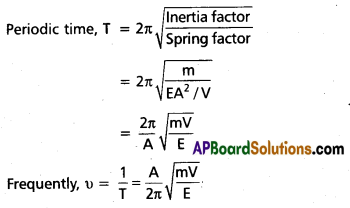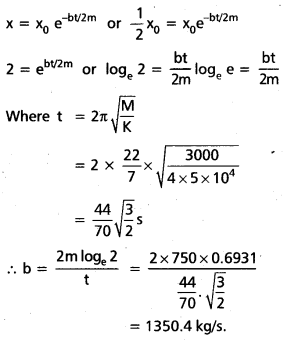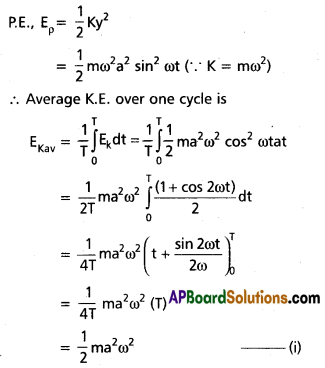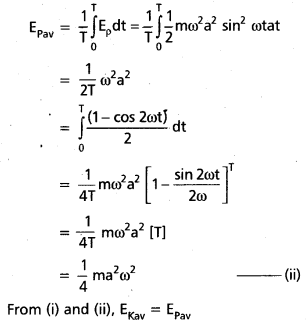Andhra Pradesh BIEAP AP Inter 2nd Year Civics Study Material 10th Lesson Local Governments in India Textbook Questions and Answers.
AP Inter 2nd Year Civics Study Material 10th Lesson Local Governments in India
Long Answer Questions
Question 1.
Explain the Functions of Panchayati Raj Institutions in India.
Answer:
Rural Governments in India after Independence were set up on the recommendations of the Balwant Raj Mehta Committee (1957) Earlier the new constitution (1950) made a reference to these bodies in Article 40 of the Directive Principles of State Policy.
The Rural Local Governments or Panchayati Raj Institutions are known by several names such as democratic decentralized institutions, local self-government institutions, three-tier democratic bodies, grass root level democratic agencies, etc. The Word Panchayati Raj denotes the name of local self-governments in rural in India.
At present Panchayati Raj Institutions in India are constituted on the basis of the Constitution (Seventy-Third Amendment) Act, 1992. Normally all the states in India (excepting those whose population is less than 20 lakhs) provided a three-tier system in the rural areas. The nomenclature, however, could differ from state to state. These relate to
- Village Panchayats.
- Panchayat Samithi (Mandal Parishads) and
- Zilla Parishads
1) Village Panchayat:
Village (or) Gram Panchayat is the lowest tier in the Panchayat Raj System. Normally there will be a village panchayat for a minimum population of 250.
Composition of Gram Panchayat
Every Gram Panchayat comprises four organs, namely ;
i. Panchayat ii. Sarpanch, iii. Panchayat Secretary and iv. Garm Sabha.
Essential Functions :
Essential functions have to be carried out by the Gram Panchayat without fail. These include the following items.
- Construction, repair and maintenance of roads and other public places.
- Construction/repair and maintenance of drainage canals.
- Construction and maintenance of burial grounds.
- Erection and maintenance of electric polls.
- Maintenance of birth and death registers.
- Conducting vaccinations for controlling rabbis and other contagious diseases.
- Provision of drinking water facilities.
- Constructions, repair and maintenance of footpaths, causeways, culverts, public parks, play grounds.
- Manufacture and sale of manures.
- Maintenance of cattle farms and so on.
Discretionary Functions :
Gram Panchayat performs these functions subject to the availability of financial resources. These include the following.
- Construction and maintenance of rest houses.
- Construction and maintenance of primary schools, dispensaries, libraries, reading rooms, market places etc.
- Establishment and maintenance of maternal and child welfare centers.
- Mobilizing voluntary labour for community development works.
- Publicizing the modem methods of cultivation.
- Implementation of land reforms and so on.
2) Mandal Parishad :
Mandal parishad is the intermediate tier in the Panchayat Raj System.
Composition :
Every Mandal Parishad comprises four organs namely,
- Mandal Parishad
- Mandal Parishad President
- Mandal Parishad Development Officer and
- Mandal Mahasabha
Functions of Mandal Parishad :
Mandal Parishad performs the following functions.
- It takes steps for implementing various community development programmes.
- It makes arrangements for providing amenities like dispensaries, drinking water, vaccination and non-choking gas stoves.
- It implements several programmes like community educations communications, cooperation, cottage industries, women welfare, social welfare etc.
- It takes steps for raising production in agricultural sector through the provision of superior quality seeds, manures, pesticides, latest technology etc.
- It implements programmes for improving the health and strength of cattle by furnishing improved fodder, artificial insemination centers, cattle grazing etc.
3) Zilla Parishad :
Zilla Parishad is the upper tier of the Panchayat Raj System. There will be a Zilla Parishad in every district. Zilla Parishad is the superior local body at the district level and has the corporate status. It is known as Zilla Panchayat in Gujarat, Zilla Vikasparishat in Timil Nadu and Mahakum Council in Assom, District Development Council in Karnataka.
Composition :
Zilla Parishad comprises six organs, namely ;
- Zilla Parishad
- Zilla Parishad Chairman
- Zilla Mahasabha
- Chief Executive Officer
- Standing Committees and
- District Collector
Functions of Zilla Parishad :
Zilla Parishad performs the following functions
- It approves the annual budget of the Mandal Parishads in the District.
- It allocates the grants sanctioned by the union and state governments among the Mandal Parishads. ,
- It takes steps for implementing the directives of the union and state governments.
- It acts as the supervising and coordinating agency of various programmes of Mandal Parishad in the district.
- It conducts statistical surveys as per the guidelines of various union and state governments.
- It maintains secondary schools in the district.
- It renders advice to the union and state governments on financial matters of the Village Panchayats and Mandal Parishads.
![]()
Question 2.
Describe the various types of Urban Local Governments in India. [Mar. 17]
Answer:
As per the 74th Constitution Amendment Act, eight types of Urban Local Bodies are existing in India. They are mentioned as follows:
- Municipal Corporation
- Municipality
- Nagar Panchayat
- Notified Area Committee
- Town Area Committee
- Cantonment Board
- Township
- Port Trust
- Special Purpose Agency.
These may be explained as follows :
1. Municipal Corporation:
Municipal Corporation is an important category of urban local government. It is the highest local government institution working in each large urban area. It is constituted by a special Act of the State Government. The first Municipal Corporation was setup in the former presidency town of Madras in 1687. It was followed by similar Corporations in Bombay and Calcutta. The state government can declare the transformation of a Municipality into a Municipal Corporation when the population is at least three lakhs and annual income is four crores rupees.
Composition:
The number of members of each Municipal Corporation is determined on the basis of the population of the city concerned by the law passed by the state legislature. Every Municipal Corporation consists of four organs, namely (i) Corporation Council, (ii) Mayor, (iii) Commissioner and (iv) Standing Committees.
2. Municipalities :
Municipalities are a type of urban local bodies functioning below the level of Municipal Corporation and above that of the Nagar Panchayat / Notified Area. Normally, Municipalities are constituted for a population of 20,001 and above of when annual income is above Rs.60 lakhs. They are also constituted when annual income is above 20 lakhs acquiring from Trade Licenses, Profession taxes and non-agricultural sectors. Sometimes Panchayats are upgraded as Municipalities on the basis of population density and employment opportunities.
Municipalities are classified into five grades basing on their annual income. They are :
- Selection Grade Municipalities – Annual income over and above Rs. 4 Crores.
- Special Grade Municipalities – Annual income varying between Rs. 3 and 4 Crores.
- First Grade Municipalities – Annual income varying between Rs. 2 and 3 Crores:
- Second Grade Municipalities – Annual income varying between Rs. 1 and 2 Crores.
- Third Grade Municipalities – Annual income below Rs. One crore.
Composition :
There are four organs in every Municipality, namely, (i) Municipal Council, (ii) Municipal Chairman, (iii) Municipal Commissioner and (iv) Standing Committees.
3. Nagar Panchayat:
Nagar Panchayats are created for transitional areas (the area which is fast changing from a rural to an urban area) or for a very small urban area. For this purpose, several factors are taken into consideration; the density of the population therein, the revenue generated for local administration, the percentage of employment in non-agricultural activities, the economic importance of the area and some others.
Composition:
The strength of the members of Nagar Panchayat is fixed by the State Legislature from time to time. They are directly elected by the people of the area on the basis of adult franchise. For the purpose of election, the areas of Nagar Panchayat is divided into wards and each ward elects one member. Besides the elected members, the Member of the State Legislative Assembly (M.L.A) representing that area is also the ex-officio member of Nagar Panchayat. Every Nagar Panchayat elects one President and one Vice-President amongst its members. They are elected by all the elected members. The President presides over its meettings.
4. Notified Area Committee :
This is constituted either for a fast developing town or an area not fulfilling the conditions for the creation of Municipality. As it is created through a special notification of the state government, it is known as Notified Areas Committee. It does not possess statutory position. It will have a Chairman and some members who are nominated by the state government. Its functions are more or less same as9 that of a Municipality.
5. Town Area Committee :
Town area committee is setup by an act of State Legislature. It fulfils the public needs of a small town. It will have a chairman and members nominated by the state government. It performs limited functions like street lighting, drainage etc. Its authorities take steps for improving the conditions of the people living in the town area.
6. Cantonment Boards :
Cantonment Boards are established in India under the Cantonment Act of 1924. At present there are 62 Cantonment Boards in India. These bodies take steps for improving the conditions of civilian population and military personnel in their jurisdiction. There are three types of Cantonment Boards in India. They are created by an Act of the defense ministry. Each Board comprises some members belonging to the elected, nominated and ex-officio categories. There will be a General Officer on Command (GOC) for every Cantonment Board.
7. Township :
Township is established by the public sector undertakings to provide basic civic amenities to its personnel. It has no elected members. There will’ be a Town Administrator for every Township, He is appointed by the concerned ministry of union government. Its services are meant not for the general public but for the personnel working in the public sector undertakings.
8. Port Trust:
Port Trust is setup in the areas where port personnel are in considerable- member. It manages the affairs of ports. It takes proper steps for protecting the interests of personnel in the port areas. The union government constitutes port affairs committee. The committee comprises both nominated and elected members.
9. Special Purpose Agencies :
These agencies are meant for tackling some special issues faced by the people. They perform some peculiar functions for the people residing in municipalities and other notified urban areas. They are established by the special Acts of state legislature. Sometimes they came into vogue through a special order of the state government. Housing Board, Water Supply, Undertakings, Electricity Generation and Distributions Grids, Urban Development Authorities etc., are some examples of these Agencies.
Question 3.
Mention briefly the main provisions of the 73rd Constitution Amendment Act.
Answer:
The Union Government headed by the Prime Minister P.V Narasimha Rao strongly felt the need for immediate grant of Constitutional status to the Panchayat Raj Institutions. It introduced a Bill to that effect in the Parliament in September 1991. Later, the bill was referred to a joint select committee which studied the former and submitted its report in July 1992.
The bill was accepted by the Parliament and the same was referred to the state legislatures for their approval. As majority state legislative assemblies accepted the Bill, it became an Act in the name of the Constitution (Seventy Third Amendment) Act, The Act came into force from April 24, 1993.
The Act reinserted Part IX which was deleted by the Constitution (Seventh Amendment) Act, 1956 and added a new Schedule, namely 11th schedule. The Act deals with Articles 243 to 243 (O) of the Indian Constitution.
Salient features
The 73rd Constitutional Amendment Act of 1992 has the following salient features:
- The Act defined clearly certain terms like District, Gram Sabha, Panchayat, Village etc.,
- It constituted a Gram Sabha for every village which acts as the legislative body at the village level.
- It made obligatory for every state to implement three tire system of Panchayat Raj i.e., Panchayat at the Village, intermediate and district levels.
- It insisted every state legislature to make laws for the composition of Panchayat on uniform basis. It further specified direct elections to panchayat based on territorial constituencies. It provides right to vote to the chairpersons of Panchayat and other members whether directly elected or not.
- It provided reservation in every Panchayat for Schedule Castes and Schedule Tribes in proportion to their population to the total population in the Panchayat area and women not less than 1/3rd of the total seats (Andhra Pradesh Government enhanced the Women Reservation up to 50%).
- It specified the duration of Panchayat as five years and insisted on holding elections before the expiration of the term or in case of dissolution within six months.
- It prescribed the eligibility and disqualifications of the candidates in local government.
- It provided for the creation of a Finance Commission for local bodies.
- It provided for auditing the accounts of the Panchayats by the state account and audit officers.
- It also provided for State Election Commission for conducting elections to the local bodies.
- It stated that union territories shall follow the directives of the President of India in constituting or abolishing Panchayats.
- It mentioned some exemptions to the states having administrative councils in scheduled areas.
- It provided for special Tribunals for solving election disputes.
Question 4.
Explain briefly the important provisions of 74th Constitution Amendment Act.
Answer:
The Constitution (Seventy Fourth Amendment) Act, 1992 was approved by the Parliament in December, 1992. It was regarded as a progressive step in strengthening the urban local bodies in India. It provided a common framework for the effective functioning of these bodies. The Act came into force on June 1, 1993.
Main Provisions :
- The Act gave Constitutional status to the urban local bodies in India for the first time. It introduced a new part in the Constitution, namely part IX-A.
- It incorporated the 12th schedule in the Constitution.
- It listed out 18 subjects under the jurisdiction of urban local bodies.
- It gave definitions of various terms concerning the urban local bodies. It constituted metropolitan area for urban areas having a population of ten lakhs or more.
- It provided for the Constitution of various urban local bodies such as Municipal Corporation, Municipal Council, Nagar Panchayat etc. The Act authorized the state governments to designate and demarcate the urban local bodies as and when necessary.
- It specified the composition of the Municipalities. It declared that the elected members of the Legislative Assembly and the Lok Sabha of the concerned area will act as ex-officio members of the Municipalities. It also authorized and members of Legislative Council and the Rajya Sabha as members of Municipalities subject to their voting enumeration in the respective areas.
- It authorized the state legislature to make legislation for the composition of ward committees in Municipalities.
- It provided for reservation of some seats in urban local bodies for Scheduled Castes and Scheduled Tribes in proportion to their population in municipal areas. It also enabled one – third reservation for women in municipal areas and to the offices of Chairman / Chairperson of Municipalities on rotation basis.
- It prescribed the uniform term for 5 years for Municipalities. It also clarified that elections shall be held within the six months after its dissolution.
- It specified that the persons who are disqualified to become members of Legislative Assembly shall also become disqualified as members of Municipality. It also prescribes 21 years of age for becoming a member of Municipality.
- It empowered the state legislature to make laws enabling the Municipalities to impose and collect taxes, allocate funds and receive Grant-in-aid from the state government.
- It enabled the state government to appoint the State Finance Commission for every five years for making recommendations (to the Governor) on the principles for distribution of Grants-in-aid among the urban local bodies.
- It allowed the state legislature to make legislation for the audit of the accounts of urban local bodies.
- It provided for the appointment of State Election Commission to conduct, supervise, direct and control the elections to the urban local bodies.
- It also enabled the state legislature to create a district planning committee in each district for consolidating the plan activities.
- It provides for the establishment of metropolitan planning committees state.
![]()
Question 5.
Estimate the Powers and Functions of the District Collector. [Mar. 18, 16]
Answer:
Power and Functions of District Collector: The District Collector enjoys vast power and performs several functions as the head of the district administration. These may be explained as follows :
A) The Collector as District Revenue Officer :
The Collector is the Chief District Revenue Officer. He, in that capacity, serves as the chief guide to the farmers in the district by fulfilling several obligations. His revenue functions include various activities such as collection of land revenue, sanction of agricultural loans to farmers, rescuing the farmers in times of natural calamities by assessing the loss incurred by them, rendering assistance to the union and state authorities in emergency relief measures etc.
B) The Collector as District Magistrate:
The Collector acts as the District Magistrate. He will have supervision over the activities of the district police personnel. He sees that law and order conditions in the district are normal. For this purpose he will be assisted by a large number of police personnel. The district superintendent of police and other police officers owe responsibility to the Collector in matters such as supervision over police personnel prisons etc,. The Collector can inspect the police stations in the district. He is empowered to issue prohibitory orders on the occasion of breakdown of law and order. He can issue firing orders when all peaceful efforts failed in the restoration of normal.
C) The Collector as Chief Coordinator :
The District Collector acts as the chief co-ordinator of various government departments in the district. He acts as the chief counsel and co-ordinator of the departments such as agriculture, irrigation, co-operation and labour affairs. The heads of these departments shall oblige and implement the suggestions and guidelines of the collector in the district. Even though these heads formulate their policies independently, they are answerable to the District Collector in their discharge of their obligations.
D) The Collector as District Electoral Officer :
The Collector acts the chief district electoral officer. He serves as the main agent of the Election Commission of India for conducting elections to the various representative bodies in the district. He takes steps for conducting the elections in fair and impartial manner. These include preparation of electoral list and its modification, hearing public grievances on voters list, registration of new voters, appointing returning officers assistant returning officers etc.
E) The Collector as the Chief Census Officer:
The Collector acts as the chief census officer in the district. He on behalf of the union and state governments, takes steps for holding census operations in the district for every ten years. He also sees that the statistical data regarding the number of milch cattle, trees and domesticated animals in the district is collected properly. He also compiles such other information as required by the higher ties in regard to the construction of houses for the poor, family welfare, women erment, rural infrastructure etc.
F) The Collector as Permanent invitee of Local Bodies :
The District Collector is a permanent invitee to the meetings of Panchayat Raj and urban local bodies in the district. He acts as a main link between the union and state governments and district local bodies on various matters. He participates in the normal/emergency meetings of Zilla Parishad and mandal parishads in the district. He sends confidential reports to the state government on the nature of functioning of these bodies. He conducts the meeting meant for considering the no confidence motion against the Zilla Parishad chairman.
Other Functions :
This District Collector also performs the following functions.
- Matters concerning the welfare of Ex-servicemen.
- Provision of irrigation facilities.
- Supervision over sub treasuries.
- Co-ordinating the activities of various government departments.
- Supervising the training programmes for Junior Officers.
Role of District Collector in Local Government:
The District Collector plays a crucial role in the affairs of local governments in the district. He serves as the friend, philosopher and guide to the common men living in the district. He also serves as a link between people and local bodies in the district. Normally the common men seek guidance and solace from the Collector in times of natural calamities and other unforeseen contengencies.
The Collector makes recommendations to the state government in regard to the working of the local bodies in the district. His valuable remarks are required for constituting new gram panchayats and mandal parishads in the district. The entire administrative, revenue, police, health, educational and agricultural personnel working in rural areas depend to a great extent upon the advice and suggestions forwarded by the Collector on may occasions.
He sees that the farmers in the district receive sufficient agricultural inputs such as fertilizers, water, rural credit, marketing facilities etc. He supervises the activities of village extension officers and sees that the farmers receive various types of assistance for carrying on their agricultural, operations smoothly. He also sees that all persons below poverty line will receive, ration and pension facilities.
The fact that the Collector heads more than one hundred committees at the district level demonstrates his role in district affairs. He, like the Chief Minister at the state level, will have tremendous influence and powers in the district. Many programmes of union and state governments like National Rural Employment Guarantee Scheme (NREGS), Pradhan Mantri Gram Sadak Yojana (PMGSY), Janani Suraksha Yojana (JSY), Aam Admi Bima Yojana (AABYj, Rural Landless Employment Guarantee Programme (RLEGP). Prime Ministers Employment Generation Programme (PMEGP).
The union and state governments, rely on the District Collector in tackling the financial, political and cultural matters of the people living in local areas, They nominate the District Collector as the chairman, co-ordinator or secretary of the above programmes at the district level. People regard the Collector as a repository of authority functioning independently with dedicated spirit. Eventhough some states like Gujarath and Maharashtra relieved the Collector from the perspective.
Short Answer Questions
Question 1.
Write briefly about the Historical background of Local Governments in India.
Answer:
Historical Background: Local governments in India have a long historical background. The Rigveda, the oldest of four Vedas, mentioned two institutions namely, Sabha and Samithi which performed several administrative and political functions at community level. They were the effective administrative state structures at local levels in ancient period. They relate to village panchayats and caste panchayats . Which managed the administrative and judicial affairs of a village community. These institutions continued for several years even without the effective support of the ruling classes of the time. Many eminent writers like Megasthanes, Kautilya and Fahien have cited the existence of these bodies in their writings.
In medieval period, village panchayats flourished during the chola dynasty in South India. The cholas were renowned for their patronage of the local bodies. However, the local governments of the present form is attributed to the efforts of some British officers at higher levels. They developed these bodies to promote the colonial interests. Lord Mayo’s Resolution (1870) and Lord Rippon’s Resolution (1882) paved the way for the progress of these institutions in India. Earlier the East India Company established the Municipal Corporation of Madras in 1688 with the consent of Emperor George II.
Some Mayor courts wefe set up in Madras in 1726 for collecting taxes and administering, justice. The Regulating Act of 1773 paved the way for the establishment of local governments at Calcutta (Kalkota), Madras and Bombay (Mumbai). Lord Rippon, the Governor General of India moved the famous resolution for devolving financial and administrative powers to the local governments. His resolution is known as the Magnacarta of Local Governments in India.
He was described as the father of local self-governments in India. Later on the successive British rulers in India have initiated many steps for providing more authority to the local bodies. Some of the notable legal enactments are Bengal Municipalities Act, 1884; Bengal Local Governments Act, 1885; Bengal Village self-government Act, 1919 etc. The Royal Commission on Decentralization headed by Sir Charles Hobhouse (1906) offered valuable suggestions for setting up of village panchayats, constitution of district boards, entrusting primary obligations to municipalities etc. The Government of India Act, 1919 introduced diarchy at state level. It gave impetus to the local governments. It empowered the Indian ministers to take decisions in regard to the maintenance of local bodies.
The Government of India Act, 1935 assigned the provincial governments with the obligation of making the local bodies energetic and efficient. It placed the subject of ‘Local Self Government’ under Entry 12 of the provincial governments. Consequently many provincial governments passed Acts delegating the local governments the powers of administration including criminal justice to the panchayats. Prominent leaders of national movement like Mahatina Gandhi supported the cause of local governments.
Question 2.
Explain the advantages of Local Government.
Answer:
Definition:
Local Government is defined in many ways by different political scientists. Some of them are cited below :
According to Sidgewick “Local government consists of certain subordinate bodies which have defined powers of making rules and regulations within their prescribed area of administration.” Prof. Finer. H defined that “the Local Government means authority to determine and execute measure within a restricted area inside and smaller than the whole state.” In the words of Duane Lockard “Public Organization authorized to decide and administer a large range of public policies within its small territory”.
Advantages- of Local Governments? Local governments have the following advantages :
- Local government institutions provide extensive range of service to the people.
- They lead to efficiency of administration at local as well as state and national level.
- They lead to economy in administration.
- They cultivate spirit of self – help and self – dependence.
- They promote spirit of liberty among people.
- The Local Governments facilitate the ventilation of people’s grievances and provide effective solution to local problems.
- They ensure the participation of the people in the formulation and implementation of development programmes at grass root level.
Question 3.
What are the Functions of Panchayat Secretary?
Answer:
Every Panchayat shall have a full time Secretary who is an officer of the government. He shall draw his salary and allowances from the Panchayat fund as per government rules. He will be iri charge of the office of the Panchayat. He will work under the direct supervision of the Panchayat Sarpanch.
Powers and Functions of the Panchayat Secretary.
Panchayat at Secretary performs the following functions. They are :
- Preparation of budget and annual administration report.
- Preparation of monthly / quarterly statements of accounts.
- Maintenance of cash book.
- Keeping all records of the Panchayat in safe custody.
- Allotment of duties to the staff posted in Gram Panchayat.
- Submission of application for grant-in-aid and maintain grant-in-aid register:
- Visit the work sites and assess the work in progress.
- Attend to complaints relating to developmental works etc.
Question 4.
What do you know about Gram Sabha?
Answer:
Gram Sabha :
There will be a Gram Sabha in every Panchayat. It comprises all the adult citizens who have been entitled to vote. It meets at least twice a year usually after Rabi and Kharif crops are harvested. It discusses and approves the administrative and audit reports. It identifies the beneficiaries of development schemes. It takes steps for mobilizing voluntary labour for community welfare programmes.
In many states Gram Sabhas are known with the same name. However, they are called Panchayats in Bihar and Palisabhas in Odisha. The Union Government declared the year 2009 – 2010 as the year of Gram Sabha on the eve of golden jubilee celebrations of village Panchayat. It directed the state governments to make arrangements for convening Gram Sabha on April 14 of every year. (Second one in the month of October)
Question 5.
Write a brief note on Mandal Parishad.
Answer:
Mandal Parishad is the intermediate tier in the Panchayat Raj System. It is set up according to the statutes of state government. In different states, the Panchayat Samiti has been given different names. Tamil Nadu calls them Panchayat Union Council, in Karnataka as the Taluka Development Board, in Gujarat as the Taluka Panchayat. However, the most popular name happens to be the Panchayat Samithi. 4
Composition
Every Mandal Parishad comprises four organs namely,
- Mandal Parishad
- Mandal Parishad President
- Mandal Parishad Development officer and
- Mandal Mahasabha
Question 6.
Explain the composition of Zilla Parishad.
Answer:
Composition
Zilla Parishad comprises six organs, namely ;
- Zilla Parishad
- Zilla Parishad Chairman
- Zilla Mahasabha
- Chief Executive Officer
- Standing Committees and
- District Collector
i) Zilla Parishad :
Zilla Parishad is the legislative wing at the district level. It comprises various types of members, i.e., elected, co-opted and ex-officio members. District level authorities like the District Collector, Chairmen of District Co-operative Central Bank, District Co-operative Marketing Society and Zilla Grandhalaya Samastha participate in the meetings as permanent invitees. Besides, the Members of State Legislative Assembly and Lok Sabha participate in the meetings as ex – officio members.
ii) Zilla Parishad Chairman :
The Chairman, being the political head, presides over the meeting of Zilla Parishad. He is elected by the elected members of Zilla Parishad, i.e., ZPTCs, MPs, MLAs and MLCs of the district concerned. The Chairman presides over the ordinary and special meetings of the Zilla Parishad. He conducts the meetings with dignity.
He permits the members for moving resolutions, allocates time for discussion and conducts voting on the resolutions. He also presides over the meetings of Zilla Mahasabha and some standing committees. He acts as a link between Zilla Parishad and the State Government. He-will have administrative control over the Z.P. Chief Executive Officer in the implementation of various resolutions. –
iii) Zilla Mahasabha :
There will be a Zilla Mahasabha in every Zilla Parishad. It comprises a chairman and some other members of Zilla Parishad. It serves as an advisory body to the Zilla Parishad. The Zilla Parishad Chairman presides over its meetings. The Chief Executive Officer attends its meetings in Ex-officio capacity. It performs three important functions, namely
- Examining the annual budget and audit reports of Zilla Parishad
- Administrative report of the previous year and
- Other matters of Zilla Parishad.
iv) Chief Executive Officer (C.E.O):
There will be a Chief Executive Officer in every Zilla Parishad. He is appointed by the state government and responsible to the State Government and Zilla Parishad in exercise of his powers and functions. He serves as the administrative head of Zill Parishad.
v) Standing Committees:
There are seven Standing Committees in Zilla Parishad. They render advice to the Zilla Parishad on several matters like planning, finance, agriculture, rural development, women, social welfare, education, health etc. The Chief Executive Officer prepares the agenda of the meeting and decides the venue of the standing committees on the advice of Zilla Parishad Chairman.
vi) The District Collector :
The District Collector participates in Zilla Parishad and standing committee meetings as a permanent invitee.
![]()
Question 7.
Elucidate various Urban Local Bodies in India.
Answer:
As per the 74th Constitution Amendment Act, eight types of Urban Local Bodies are existing in India. They are mentioned as follows :
- Municipal Corporation
- Municipality
- Nagar Panchayat
- Notified Area Committee
- Town Area Committee
- Cantonment Board
- Township
- Port Trust
- Special Purpose Agency,
1) Municipal Corporation:
Municipal Corporation is an important category of urban local government. It is the highest local government institution working in each large urban area. It is constituted by a special Act of the State Government. The first Municipal Corporation was setup in the former presidency town of Madras in 1687. It was followed by similar Corporations in Bombay and Calcutta. The state government can declare the transformation of a Municipality into a Municipal Corporation when the population is at least three lakhs and annual income is four crore rupees.
2) Municipalities :
Municipalities are a type of urban local bodies functioning below the level of Municipal Corporation and above that of the Nagar Panchayat / Notified Area. Normally, Municipalities are constituted for a population of 20,001 and above or when annual income is above Rs. 60 lakhs. They are also constituted when annual income is above 20 lakhs acquiring from Trade Licenses, Profession taxes and non-agricultural sectors. Sometimes Panchayats are upgraded as Municipalities on the basis of population density and employment opportunities.
3) Nagar Panchayat:
Nagar Panchayats are created for transitional areas (the area which is fast changing from a rural to an urban area) or for a very small urban area. For this purpose, several factors are taken into consideration; the density of the population therein, the revenue generated for local administration, the percentage of employment in non-agricultural activities, the economic importance of the area and some others.
4) Notified Area Committee :
This is constituted either for a fast developing town or an area not fulfilling the conditions for the creation of Municipality. As it is created through a special notification of the state government, it is known as Notified Areas Committee. It does not possess statutory position. It will have a Chairman and some members who are nominated by the state government. Its functions are more or less same as that of a Municipality.
5) Town Area Committee :
Town area committee is setup by an act of State Legislature. It fulfils the public needs of a small town. It will have a chairman and members nominated by the state government. It performs limited functions like street lighting, drainage etc. Its authorities take steps for improving the conditions of the people living in the town area.
6) Cantonment Boards :
Cantonment Boards are established in India under the Cantonment Act of 1924. At present there are 62 Cantonment Boards in India. These bodies take steps for improving the conditions of civilian population and military personnel in their jurisdiction. There are three types of Cantonment Boards in India. They are created by an Act of the defense ministry. Each Board comprises some members belonging to the elected, nominated and ex-officio categories. There will be a General Officer on Command (GOC) for every Cantonment Board.
7) Township :
Township is established by the public sector undertakings to provide basic civic amenities to its personnel. It has no elected members. There will be a Town Administrator for every Township. He is appointed by the concerned ministry of union government. Its services are meant not for the general public but for the personnel working in the public sector undertakings.
8) Port Trust:
Port Trust is setup in the areas where port personnel are in considerable member. It manages the affairs of ports. It takes proper steps for protecting the interests of personnel in the port areas. The union government constitutes port affairs committee. The committee comprises both nominated and elected members.
9) Special Purpose Agencies :
These agencies are meant for tackling some special issues faced by the people. They perform some peculiar functions for the people residing in municipalities and other notified urban areas. They are established by the special Acts of state legislature. Sometimes they came into vogue through a special order of the state government. Housing Board, Water Supply, Undertakings, Electricity Generation and Distributions Grids, Urban Development Authorities etc., are some examples of these Agencies.
Question 8.
What do you know about the Municipalities?
Answer:
Municipalities are a type of urban local bodies functioning below the level of municipal corporation and above that of the Nagar Panchayat. Normally Municipalities are constituted for a population of 20,001 and above or when annual income is above Rs. 60 lakhs.
Municipalities are classified into five grades basing on their annual income. They are :
- Selection Grade Municipalities – Annual income over and above Rs. 4 Crores.
- Special Grade Municipalities – Annual income varying between Rs. 3 and 4 Crores.
- First Grade Municipalities – Annual income varying between Rs. 2 and 3 Crores.
- Second Grade Municipalities – Annual income varying between Rs. 1 and 2 Crores.
- Third Grade Municipalities – Annual income below Rs. 1 Crore.
Composition :
There are four organs in every Municipality, namely, (i) Municipal Council, (ii) Municipal Chairman, (iii) Municipal Commissioner and (iv) Standing Committees
The structure, powers and functions of these may be explained as under:
i) Municipal Council:
Municipal Council is the deliberative body of the Municipality. It consists of some (i) elected, (ii) co-opted and (iii) ex-officio members. Registered voters in the municipal area elect the first category of members. They are called councillors. The elected members will in turn elect the second category of members. They are called co¬opted members. The District Collector and the Municipal Commissioner; The members of the Lok Sabha and State Legislative Assembly of the area,concerned are called as the ex¬officio members.
Normally the Council meets once in a month. The Municipal Commissioner prepares the agenda of the Municipal Council after consulting the Municipal Chairman. Some seats in the Municipal Council are reserved for Scheduled Castes, Scheduled Tribes, Backward Classes and women. Municipal Council considers the matters relating to the Municipality.
ii) Municipal Chairman :
Municipal Chairman is the political head of the Municipal Council. He is elected by the councillors. He is the first citizen of the Town. The Chairman conducts the meetings of the Municipal Council. All the correspondence of the Municipality shall be carried on in his name.
iii) Municipal Commissioner :
Municipal Commissioner is the administrative head of the Municipality. He is responsible for discharging his functions in the Municipal Council and the State Government.
iv) Standing Committees :
Every Municipality consists of some standing committees. These Committees act as advisory bodies to the Municipality on matters of finance, works, health, education, women welfare, and welfare of the backward classes etc. Municipal Chairman presides over the meeting of these committees. The standing committees establish a liaison with the routine administrative matters of the Minicipality.
Functions of Municipality: Every Municipality, like that of the Municipal Corporation, performs two types of functions, namely (i) essential and (ii) discretionary.
Essential Functions
Essential functions of the Municipality include the following:
- Maintenance of birth and death registers.
- Establishment and maintenance of elementary, upper primary and secondary schools.
- Provision of purified drinking water and street lights.
- Maintenance of public health and sanitation.
- Construction and maintenance of roads and buildings.
- Safeguarding and preserving municipal properties etc.
Discretionary Functions
A Municipality performs the following discretionary functions.
- Reclamation of unhygienic places.
- Maintenance of parks, museums, gardens, rest houses, regarding rooms etc.
- Maintenance of child, women welfare and maternity centers.
Sources of Income
Every Municipality has the following five sources of income.
- Taxes collected from people
- Fees and duties
- Income in the form of rent from markets and buildings.
- Public borrowings and grants and
- Public contributions.
Question 9.
Write any three Functions of District Collector?
Answer:
1. Revenue Administration :
Revenue administration is a traditional function of the- Collector, (a) The Collector makes arrangements for the collection of land revenue (b) He hears the difficulties of the farmers on land revenue matters (c) He receives petitions from the farmers and tries to settle their problems (d) He collects land revenue. In this respect, he is assisted by officials of revenue department like Revenue Divisional Officers, Mandal Revenue Officers, Revenue Inspectors etc., (e) He is responsible for Land reforms, Land acquisition etc. (f) He recommends remissions of Land revenue during famines or other calamities, (g) He maintains land revenue records and agricultural statistics of the district.
2. District Magistrate:
The Collector acts as the District Magistrate. In that capacity, he
- Issues orders for the maintenance of law and order in the district.
- Disposes petitions and complaints from the private individuals and the Government.
- Imposes prohibitory orders during disturbances.
- Supervises Subordinate Courts.
- Take steps for the provision of better facilities to prisoners.
- Inspects police stations ….etc.
3. As a District Election Officer:
District Collector is the returning officer for elections to Parliament and State Legislature within the district. It is his responsibility to coordinate the election work at district level and conduct the polls freely and peacefully.
Thus the Collector plays a key role in district administration. He is considered as the friend, philosopher and guide of the people in the district.
![]()
Question 10.
Estimate the Role of a District Collector.
Answer:
The fact that the Collector heads more than one hundred committees at the district level demonstrates his role in district affairs. He not only presides over such meetings but also takes steps for implementing the decisions taken there of. He visits various mandals and villages in the district for about twenty days in every month and supervises the development of local bodies at the field level. He, like the chief minister at the state level, will have tremendous influence and powers in the district.
Many programmes of union and state governments like National Rural employment Guarantee Scheme (NREGS), Pradhan Mantri Gram Sadak Yojana (PMGSY), Janani Suraksha Yojana (JSY), Aam Admi Bima Yojana (AABY), Rural Landless Employment Guarantee Programme (RLEGP). Prime Ministers Employment Generation Programme (PMEGP), Valmiki Ambedkar Awas Yojana (VAMBAY), National Rural Health Mission (NRHM), Mid-Day Meal (MDM) scheme etc, depend upon the dynamic leadership of the district collector.
The union and state governments, rely on the District Collector in tackling the financial, political and cultural matters of the people living in local areas. They nominate the District Collector as the chairman, co-ordinator or secretary of the above programmes at the district level. People regard the Collector as a repository of authority functioning independently with dedicated spirit.
Even though some states like Gujarath and Maharashtra relieved the Collector from the perspective of development functions, even today it is popularly felt about the prominence of the Collector due the popular confidence and credibility. The people of North India prefer to address the District Collector as their maa- baap (mother and father).
Question 11.
Explain the concept of Smart village.
Answer:
The concept of Smart Village is the recent development in Panchayat Raj System in A.P inaugurated by the Chief Minister of Andhra Pradesh Nara Chandrababu Naidu in 2015. Andhra Pradesh is committed to achieve holistic, inclusive and sustainable development of the state. The state has a vision “Swarnaandhra Vision 2029” to be a developed State and to be among the best three states in the country. To realize this vision, the government has adopted the mission based approach to create the social and economic infrastructure; has initiated campaigns to create awareness seeking participation of the stakeholders.
A ‘Smart Village / Ward’ displays sustainable and inclusive development with all sections of its community enjoying a high standard of living. This is achieved when the village/ward excels in the following indicators :
- Every household has vibrant livelihood opportunities and or micro-enterprise.
- Home for all – with access to toilet, safe- drinking water, and power.
- Open defecation free.
- 100% institutional deliveries.
- No maternal deaths.
- No infant deaths within one year of birth.
- Malnutrition free (children below 5 years of age).
- Zero school drop outs of boys and girls up to 12th class.
- No girl-child marriages (girls below 18 years of age).
- Functional toilet, portable water, electricity available in Anganwadi Centres, School, health centre, GP Building / ward.
- Gram Sabha / Ward Sabha held four times a year with 2/3rd attendance.
- Every village household has a functional bank account/Prime Minister Jan Dhan Bank Account.
- Every farm has soil health card and diversification with livestock, trees, etc.
- Gram Panchayat / Ward has it own dynamic development plan prepared by community participation.
- The Village has green trees all over its geographic boundaries.
- The Village has functional water conservation and harvesting structure.
- The Village has functional grievance redressal system.
- The Village has functional Village Information Centre, Village Computer Lab, and Mee-Seva Centre. .
- The Village has telecom/intemet connectivity.
- The Village has functional solid/liquid waste management system.
Very Short Answer Questions
Question 1.
Rural Local Government.
Answer:
Rural Local Governments or Panchayati Raj institutions in India, signifies the system of Rural Local Governments. They serve as the backbone of India’s political culture. These institutions are of three types, popularly known as three tier system.
- Gram Panchayats
- Mandal Parishads and
- Zilla Parishads .
Question 2.
The Constitution (Seventy Third Amendments) Act, 1992.
Answer:
The Union Government headed by the Prime Minister P. V Narasimha Rao strongly felt the need for immediate grant for constitutional status to the panchayat raj institutions. It introduced a bill to that effect in the Parliament in September 1991. After the bill was reffered to a joint select committee in July 1992. The bills was accepted by the Parliament and the same reffered to the State Legislatures for their approval. It become an act in the name of Seventy Third Amendment Act, 1992.
Question 3.
Gram Sabha.
Answer:
There will be a Gram Sabha in every Panchayat. it comprises all the adult citizens who have been entitled to vote. It meets at least twice a year. It discusses and approves the administrative and audit reports. It identifies the beneficiaries of development schemes. It takes steps for mobilizing voluntary labour for community welfare programmes. The Union Government directed the state governments to make arrangements for convening Gram Sabha on April 14 of every year. (Second one in the month of October).
Question 4.
Zilla Parishad.
Answer:
Zilla Parishad is the upper tier of the Panchayat Raj System. There will be a Zill Parishad in every district, zilla Parishad is the superior local body at the district level and has the corporate status.
Zilla Parishad comprises six organs, namely;
- Zilla Parishad
- Zilla Parishad Chairman
- Zilla mahasabha
- Chief Executive Officer
- Standing Committees and
- District Collector
Question 5.
M.P.D.O. [Mar. 18, 16]
Answer:
Mandal Parishad Development Officer (MPDO) is the administrative head of Mandal Parishad the plays a crucial role in the administrative affairs of the Mandal Parishad. He prepares the agenda of the parishad meetings and participates in the meeting and renders advice to the members on several matters of the Mandal Parishad. He prepares the annual budget of the Mandal Parishad. He takes steps for the effective working of the Mandal Parishad.
![]()
Question 6.
Mandal Parishad.
Answer:
Mandal Parishad is the intermediate tier in the Panchayat Raj System. It is set up according to the statutes of state Government.
Every Mandal Parishad comprises four organs namely
- Mandal Parishad
- Mandal Parishad President
- Mandal Parishad Development Officer and
- Mandal Mahasabha
Question 7.
Zilla Mahasabha.
Answer:
There will be a Zilla Mahasabha in every Zilla Parishad. It comprises a chairman and some other members of Zilla Parishad. It serves as an advisory body to the Zilla Parishad.
The Zilla Parishad Chairman presides over its meetings in ex-officio capacity. It performs three important functions namely.
- Examining the annual budget and audit reports of Zilla Parishad.
- Administrative report of the previous year..
- Other matters of Zilla Parishad.
Question 8.
Zilla Parishad Standing Committees.
Answer:
There are seven standing committees in Zilla Parishad. They render advice to the Zilla Parishad on several matters like planning, finance, agriculture, rural development, women social welfare, education, health etc. The Chief Executive Officer prepares the agenda of the meeting and decides the venture of the standing committees on the advice of Zilla Parishad Chairman. The District collector participates in Zilla Parishad and standing committees meetings as a permanent invitee.
Question 9.
Zilla Parishad Chief Executive Officer.
Answer:
There will be a Chief Executive Officer in every Zilla Parishad. He is appointed by the state government and responsible to the State Government and Zilla Parishad in exercise of his powers and functions. He serves as the administrative head of Zilla Parishad.
He plays a key role in preparing the annual budget and agenda for the general meetings of the Zilla Parishad in consultation with Zill Parishad Chairman. He will have administrative control over the personnel, assets and records of the zilla parishad. He takes necessary steps for implementing the decisions of zilla parishad, zilla mahasabha and standing committees.
![]()
Question 10.
Municipal Council.
Answer:
Municipal council is the deliberative body of the Municipality. It consists of some i) Elected ii) co-opted and iii) ex-officio members. Registered voters in the municipal area elect the first category of members. They are called councillors. The elected members will in turn elect the second category of members. They are called co-opted members. The District collector and the municipal commissioner; the members of the Lok Sabha and State Legislative Assembly of the area concerned are called as the ex-officio members. Normally the. Council meets once in a month. Municipal council considers the matters relating to the Municipality.
Question 11.
Nagar Panchay at.
Answer:
Nagar Panchayats are created for transitional areas (the area which is fast changing from a rural to an urban area) or for a very small urban area. For this purpose, several factors are taken into consideration; the density of the population therein, the revenue generated for local administration, the percentage of employment in non-agricultural activities, the economic important of the area and some others.
Question 12.
Notified Area Committee.
Answer:
This is constituted either for a fast developing town or an area not fulfilling the conditions for the creation of Municipality. As it is created through a special notification of the state government, it is known as notified areas committee, It does not possess statutory position. It will have a chairman and some members who are nominated by the state government. Its functions are more or less same as that of a municipality.
Question 13.
Cantonment Boards.
Answer:
Cantonment Boards are established in India under the Cantonment Act of 1924. At present there are 62 Cantonment Boards in India. These bodies take steps for improving the conditions of civilian population and military personnel in their jurisdiction. There are three types of Cantonment Boards in India. They are created by an Act of the defense ministry. Each Board comprises some members belonging to the elected, nominated and ex-officio categories. There will be a General Officer on Command (GOC) for every Cantonment Board.
Question 14.
Town Area Committee.
Answer:
Town area Committee is setup by an act of state Legislature. It fulfils the public needs of a small town. It will have a chairman and members nominated by the state government. It performs limited functions like street lighting, drainage etc. Its authorities take steps for improving the conditions of the people living in the town area.
Question 15.
Township.
Answer:
Township is established by the public sector undertakings to provide basic civic amenities to its personnel. It has no elected members. There will be a Town Administrator for every township. He is appointed by the concerned ministry of union government. Its services are meant not for the general public but for the personnel working in the public sector under takings.
Question 16.
Port Trust.
Answer:
Port Trust is setup in the areas where port personnel are in considerable member. It manages the affairs of ports. It takes proper steps for protecting the interests of personnel in the port areas. The union government constitutes port affairs committee. The committee comprises both nominated and elected members.
Question 17.
Collector as the District Revenue officer.
Answer:
The collector is the Chief District Revenue Officer. He in that capacity, serves as the chief guide to the farmers in the district by fulfilling several obligations. His revenue functions include various activities such as collection of land revenue, sanction of agricultural loans to farmer, rescusing the farmers in times of natural calamities by assessing the loss to incurred by them, rendering assistance to the union and state authorities in emergency relief measures etc.
Question 18.
Collector as Chief Electoral Officer in the district
Answer:
The collector acts as the chief district electoral officer. He serves as the main agent of the election commission of India for conducting elections to the various representative bodies in the district. He makes arrangements for conducting the elections in fair and impartial manner. These include preparation of electoral list and its modification, hearing public grievances on voters list, registration of new voters issue of voter IDS, appointing returning officers, assistant returning officers etc.
Question 19.
Smart Village.
Answer:
The concept of smart village is the recent development in Panchayat Raj System in A.P inaugurated by the Chief Minister of A.P to achieve holistic, inclusive and sustainable development of the state. The state has a vision “Swamandhra vision 2029″. To realize this vision, the Government has adopted the mission based approach to create the social and economic infrastructure; has adopted initiated campaigns to create awareness seeking participation of the share holder.
A smart village / ward” displays sustainable and inclusive development with all sections of its community enjoying a high standard of living.
![]()
Question 20.
Smart City.
Answer:
A “Smart city” is an urban region that is highly advanced in terms of overall infrastructure sustainable real estate, communications and market viability. It is a city where information technology is the principal infrastructure and the basis for providing essential services to residents. They benefit everybody including citizens businesses, the government and the environment.
Smart cities are those that are ables to attract investments. Good infrastructure, simple and transparent online processes that make it easy to establish an enterprise and run it efficiently are important features of an investor friendly city.
